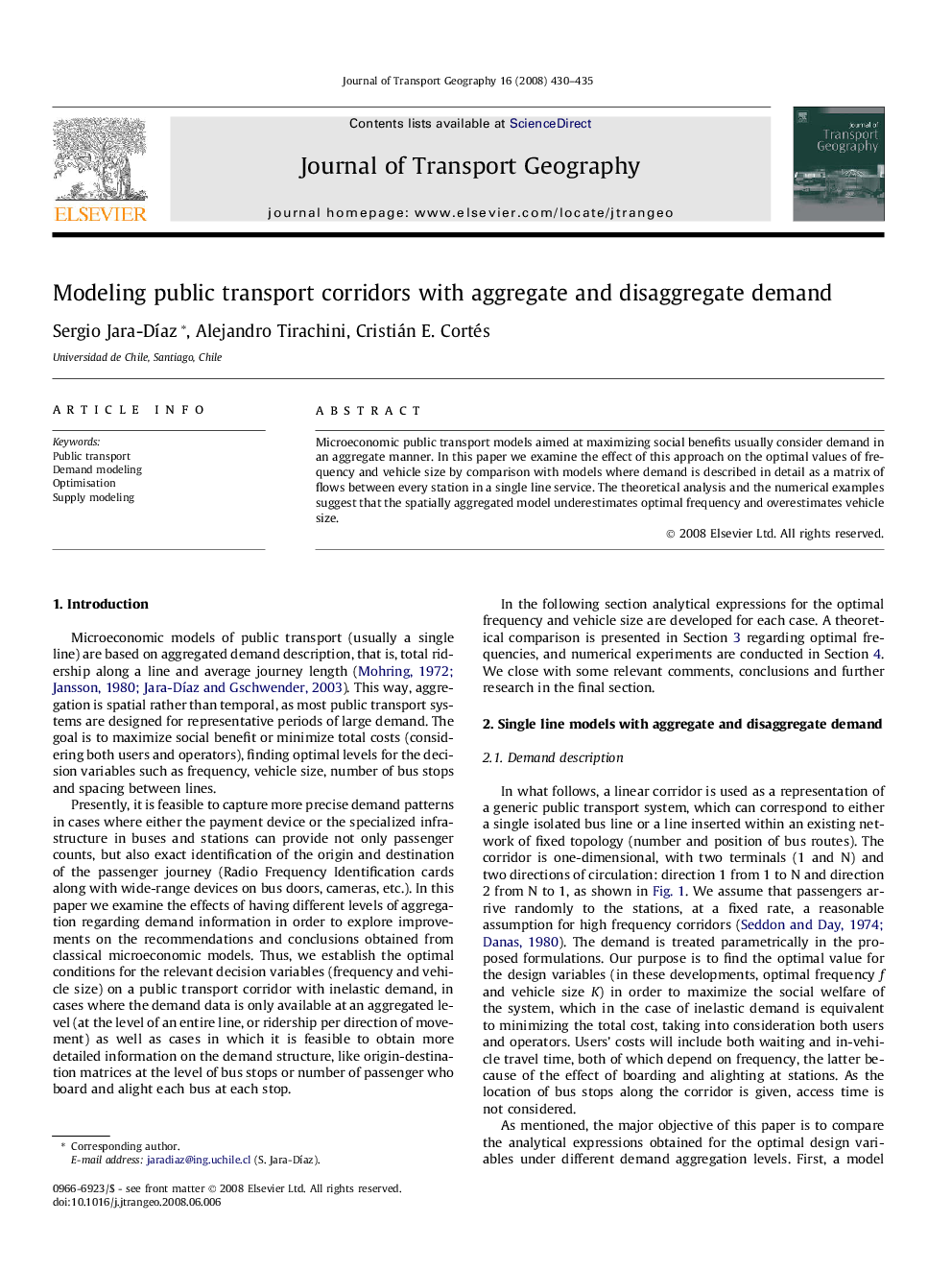| Article ID | Journal | Published Year | Pages | File Type |
|---|---|---|---|---|
| 1059894 | Journal of Transport Geography | 2008 | 6 Pages |
Abstract
Microeconomic public transport models aimed at maximizing social benefits usually consider demand in an aggregate manner. In this paper we examine the effect of this approach on the optimal values of frequency and vehicle size by comparison with models where demand is described in detail as a matrix of flows between every station in a single line service. The theoretical analysis and the numerical examples suggest that the spatially aggregated model underestimates optimal frequency and overestimates vehicle size.
Related Topics
Life Sciences
Environmental Science
Environmental Science (General)
Authors
Sergio Jara-Díaz, Alejandro Tirachini, Cristián E. Cortés,
